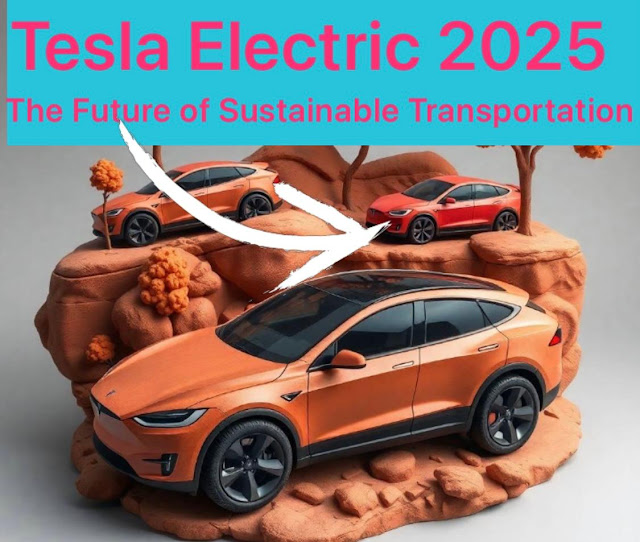The Redwood Project: Tesla's Foray into Affordable EVs
In a strategic move to broaden its market appeal, Tesla plans to introduce a mass-market electric vehicle, internally referred to as "Redwood," by mid-2025. This compact crossover aims to offer a more accessible price point, addressing the growing demand for affordable EVs. The Redwood is expected to be built on Tesla's next-generation platform, designed to reduce production costs while maintaining the brand's commitment to performance and innovation. The company has set ambitious production targets, forecasting a weekly output of 10,000 units, which translates to approximately 500,000 vehicles annually.
Elon Musk, Tesla's CEO, has emphasized the importance of integrating autonomous driving capabilities into this new model. He believes that without self-driving features, producing a conventional $25,000 vehicle would be "pointless." This perspective underscores Tesla's vision of a future dominated by autonomous transportation, where affordability and advanced technology converge.
The Second-Generation Roadster: A Supercar Reimagined
Tesla's second-generation Roadster has been a topic of anticipation and speculation since its announcement. Initially slated for earlier release, production has experienced multiple delays. As of February 2024, Elon Musk indicated that the production version would be unveiled in late 2024, with deliveries commencing in early 2025. This model is expected to feature groundbreaking performance metrics, including acceleration from 0 to 60 mph in under one second and the incorporation of steer-by-wire technology, similar to that in the Cybertruck.
Rising Competition: The Chinese EV SurgeTesla's pioneering role in the EV market has inspired a wave of competitors, particularly from China. Companies like BYD have not only matched but, in some cases, surpassed Tesla in EV sales and technological advancements. BYD's emergence as the world's largest EV maker in late 2023 marked a significant shift in the industry dynamics. The company has introduced superior charging technologies and offers features like free self-driving capabilities, contrasting with Tesla's premium pricing for similar functionalities.
Other Chinese manufacturers, including Chery, Geely, and tech giant Xiaomi, are entering various market segments, further intensifying competition. These developments challenge Tesla's market share and compel the company to innovate continually to maintain its leadership position.Financial Performance and Strategic Shifts
Tesla's financial trajectory has been a mix of achievements and challenges. In the third quarter of 2024, the company reported a 7% increase in net income, reaching $2.2 billion, and a 17% rise in revenue to $25.2 billion. Vehicle deliveries also saw a 6.3% uptick, totaling 462,890 units. However, these positive figures are tempered by a nearly 40% decline in Tesla's share price, influenced by escalating competition and internal challenges. Elon Musk's focus on ventures beyond automotive manufacturing, such as robotics and space exploration, has raised concerns among investors. While these projects align with Musk's vision of the future, they may divert attention and resources from Tesla's core business, potentially impacting the company's ability to respond swiftly to market changes. Technological Innovations and Future Prospects Tesla's commitment to innovation remains steadfast. The integration of autonomous driving capabilities across its vehicle lineup is a testament to this dedication. The upcoming "Cybercab," a two-seater autonomous vehicle without steering wheels or pedals, exemplifies Tesla's vision for the future of transportation. Priced under $30,000, the Cybercab is slated for release by 2027, pending regulatory approvals. The company's focus on reducing production costs through platform optimization is also noteworthy. By studying efficient manufacturing processes, such as those employed in the production of the Honda Civic, Tesla aims to deliver high-quality vehicles at more competitive prices. This strategy is crucial for the success of models like the Redwood, which targets the mass market. Conclusion
The company's focus on reducing production costs through platform optimization is also noteworthy. By studying efficient manufacturing processes, such as those employed in the production of the Honda Civic, Tesla aims to deliver high-quality vehicles at more competitive prices. This strategy is crucial for the success of models like the Redwood, which targets the mass market. Conclusion
 The company's focus on reducing production costs through platform optimization is also noteworthy. By studying efficient manufacturing processes, such as those employed in the production of the Honda Civic, Tesla aims to deliver high-quality vehicles at more competitive prices. This strategy is crucial for the success of models like the Redwood, which targets the mass market. Conclusion
The company's focus on reducing production costs through platform optimization is also noteworthy. By studying efficient manufacturing processes, such as those employed in the production of the Honda Civic, Tesla aims to deliver high-quality vehicles at more competitive prices. This strategy is crucial for the success of models like the Redwood, which targets the mass market. ConclusionAs 2025 unfolds, Tesla stands at a pivotal juncture. The introduction of the Redwood compact crossover and the second-generation Roadster signifies the company's efforts to diversify its portfolio and cater to a broader audience. However, the escalating competition, especially from Chinese EV manufacturers, presents both challenges and opportunities. Tesla's ability to innovate, adapt, and maintain its brand ethos will determine its trajectory in the rapidly evolving electric vehicle market


